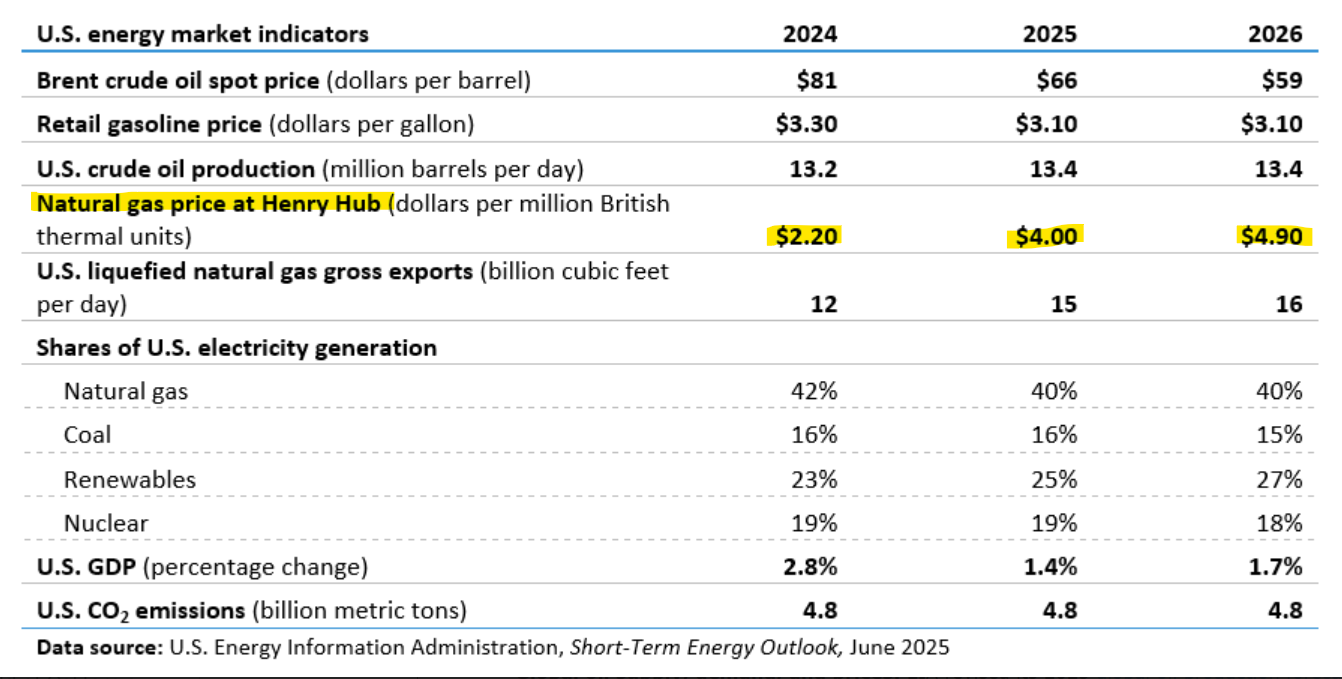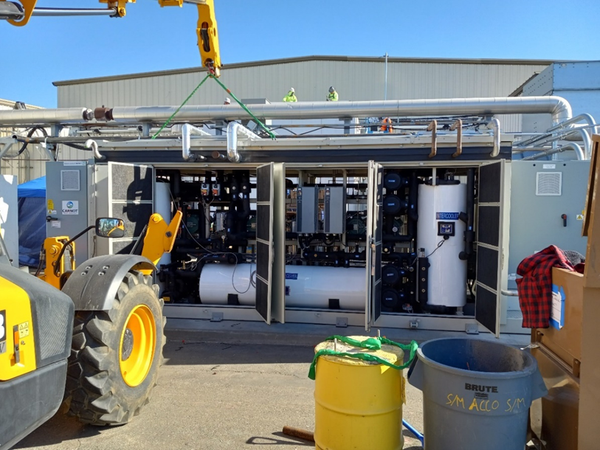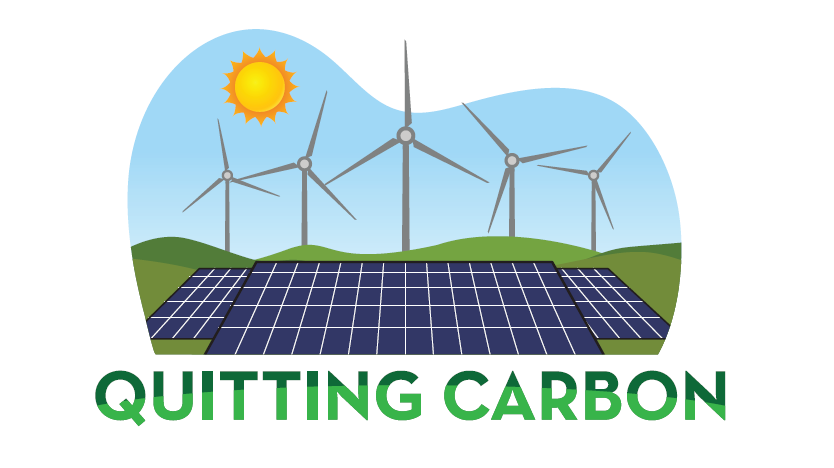What I’m reading: Trump targets DOE's national labs, heat pumps can replace your AC, LNG exports and your utility bill, and more

Quitting Carbon is a 100% subscriber-funded publication. To support my work, please consider becoming a paid subscriber or making a one-time donation.
For those of you who recently subscribed, welcome! I use these bi-weekly roundups to highlight important energy transition updates and trends you might have missed. If you like what you read here, please share this newsletter with anyone in your life who is interested in the energy transition.
I hope you’re able to relax and enjoy the July 4th break. As for me, I’ll be spending the long holiday weekend, and some time afterwards, in San Luis Obispo. Watch next week for another Q&A, this time with the co-founder of a startup in the portable solar power space. Thanks, as always, for reading.
Southern California air-quality regulators punt on zero-emission appliance rules
In my last roundup, I promised to report back on the South Coast Air Quality Management District’s then-imminent vote on proposed rules that would have accelerated the transition to zero-emission space- and water-heating appliances in the greater Los Angeles region.
After a five-hour meeting on June 6, the board voted 7-5 to reject the rules.
“The decision, driven mostly by concerns about affordability, was a rare rebuke of measures proposed by the agency’s staff, which came after years of compromise and efforts to scale back what originally was a mandate phasing out the polluting heaters,” reported CalMatters’ Alejandra Reyes-Velarde.
“The board voted 7-4 to send the two proposed rules back to a committee, which means any new version likely won’t be considered until next year.”
Trump’s budget would slash funding for DOE’s national labs
The U.S. Department of Energy’s network of 17 laboratories is a national treasure on par with the National Park System. The national labs should be among the last places Congress or the White House looks to make cuts in the federal government budget.
But as I argued in a recent column, Energy Secretary Chris Wright appears unable or unwilling to stand up to the White House to shield his department from potentially devastating cuts to staffing and funding – including at the national labs.
Energy Wire’s Brian Dabbs and Christa Marshall reported last week on the deep cuts planned for the labs in the Trump administration’s fiscal year 2026 budget proposal.
“Despite Wright’s consistent plaudits of the lab network, the Trump administration’s budget proposal takes an ax to the NETL [National Energy Technology Laboratory] budget, cutting $305 million — or 32 percent — from current levels. It slashes programs on hydrogen, vehicles, bioenergy, transmission, methane mitigation, carbon dioxide removal from the atmosphere, carbon utilization and point-source carbon capture research,” write Dabbs and Marshall.
They went on: “At a hearing this month with Wright, Senate Energy and Natural Resources ranking member Martin Heinrich (D-N.M.) said the budget would cut $2.75 billion across all labs. ‘Our nation’s scientific and energy leadership is on the line,’ Heinrich said, adding that the cuts could cause more than 7,700 job losses.”
“The budget request would slash funding at the National Renewable Energy Laboratory from current levels by more than 56 percent, from $687 million to $300 million. Within that, funding for wind, solar and hydrogen technology research would be zeroed out. Support for efficiency research on buildings at the lab would fall by more than 90 percent.”
Layoffs have already hit, or are looming, at the national labs. The National Renewable Energy Laboratory fired 114 staff in May. And Sandia National Laboratories announced plans last week to lay off hundreds of employees by early fall.
“The plan will reduce Sandia’s workforce of nearly 17,000 by between 1% and 3%, which would represent 170 to 510 workers,” reported the Albuquerque Journal’s Megan Gleason.
“The layoffs could possibly stem from a lack of funding for renewable energy work in the labs’ proposed fiscal year 2026 budget. The proposed budget shows $0 in areas such as geothermal, wind and solar technologies.”
Remember: Heat pumps can replace your AC, too
Last week, I published a Q&A with Northeast Energy Efficiency Partnerships’ Dave Lis about what can be done to accelerate heat pump sales. Among the feedback I received on social media about the interview was a plea from heat pump expert and home performance specialist Nate Adams to remind my readers that heat pumps can replace their air conditioner, too, not just their fossil fuel-fired boiler or furnace.
“One giant item that wasn’t discussed: we sell about 5 million one way ACs a year in the U.S. that block decarb for 10-20 years. We need 100% heat pump penetration regardless of backup fuel to make a real dent,” Adams wrote on Bluesky.
“It's THE missed opportunity imo. Every 6 seconds a new one way AC starts up, until that system dies in 10-20 years, there is virtually no chance to decarb that home,” he added. “Almost all discussions around home decarb focus on early adopters which are less than 20% of the market at best. Needs to change.”
“I'm a broken record on this, but frankly we're both going to be long dead before we decarb homes, maybe 2070-2080 timeframe. Possibly later. It's human, not technical. 2050 was possible if we'd done AC to HP with the HEATR Act in 2022. Maybe 1 in 10. Now more like 1 in a billion,” Adams concluded.
The U.S. LNG export boom could drive up your electricity bill
The Trump administration’s determination to boost U.S. exports of liquefied natural gas (LNG) could be yet another inflationary administration policy (along with tariffs, the pending GOP budget reconciliation bill, and the mass deportation of agriculture and service sector workers) that increases costs for consumers.
It’s clear from the administration’s rhetoric that it sees LNG exports as an unalloyed win.
“President Trump and Secretary Wright have been hard at work to expand U.S. LNG exports by removing regulatory burdens left by the previous administration,” the administration wrote in a June 11 Department of Energy press release.
But have Trump and his advisers stopped to consider what their headlong rush to export LNG will mean for American consumers? Perhaps they should read the latest forecast from their own analysts at the U.S. Energy Information Administration (EIA).
“The Henry Hub spot price in our forecast averages about $4.00 per million British thermal units (MMBtu) in 2025 and $4.90/MMBtu in 2026, compared with $2.20/MMBtu in 2024,” according to the Short-Term Energy Outlook released on June 10.
“Higher natural gas prices in 2025 and 2026 are the result of strong export growth that persistently outpaces U.S. natural gas production.”

I’m surprised that Trump’s apparatchiks at the Energy Department headquarters haven’t scrubbed that last line from EIA’s website.
Absent an increase in domestic fossil gas production that offsets the volume of LNG sent overseas, gas-fired power plants, factories, and other large U.S. gas users will be left competing for a declining share of a more expensive commodity.
“Energy Information Administration (EIA) data proves that LNG export volumes are highest during our winter peak heating season months of November through February which accelerates a reduction in U.S. inventory, increasing the price on natural gas and electricity and reduces reliability,” the Industrial Energy Consumers of America trade association said in a March 19 policy statement (PDF).
For Americans served by regulated utilities that deliver gas to homes and businesses or generate electricity from fossil gas, it won’t take long for rising gas costs to be reflected in their monthly bills. Utilities simply pass their fuel costs on to ratepayers.
In a serendipitous twist for the energy transition, a domestic gas market squeezed by LNG exports just so happens to make gas-fired electricity’s competitors – cheap wind and solar power – even more competitive.
As I wrote in a column for Energy Monitor back in October 2021:
LNG exports are sending an increasing share of the US’s natural gas production overseas, exposing the domestic market to higher global prices. Surging gas prices make renewables even more attractive.
Bonus: “Agents of green transition”
Speaking of Energy Monitor, during my last two years there, I was the managing editor, responsible for the first line edit of most features. One of the best parts of the job was opening stories for the first time and discovering how our talented team of reporters had molded ideas pitched in our weekly team meetings into deeply reported features.
I always looked forward to opening a new story from my friend and now former colleague Oliver Gordon, a supremely gifted prose stylist and storyteller who published some of our most popular stories, including explainers on everything from nuclear fusion to pumped hydro energy storage to low-carbon steel.
Now writing with the support of the Institute for Human Rights and Business, Ollie recently published a dispatch from Gujarat, India, “Agents of green transition,” profiling the women who toil in the region’s salt flats. Here’s how he opens the story:
As you reach for the salt shaker at dinner tonight, pause for a moment to consider those fine white crystals. They may represent the final stage of a journey that starts in a harsh, unforgiving world few ever see.
These crystals could well derive from the blistered salt flats of Surendranagar, in the western reaches of the Indian state of Gujarat. For generations, families like Manguben Dhirubhai Jaga’s have toiled from dawn to well past dusk in the 45ºC heat and blinding sun to produce one of the world’s most essential and undervalued minerals. And thanks to climate change, their lives are only getting tougher.
Keep reading to fully appreciate Ollie’s vivid prose and striking photographs.
Journalists keep searching for ways to continue doing what we love, despite all the headwinds facing the industry. The path I found is publishing this newsletter.
I am thankful that Ollie has found a way to keep sharing his stories with the world, too.




